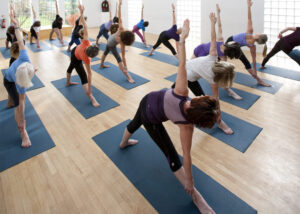Sheetali Pranayama Pronunciation
Sheetali – pronounced: she – ta- li – is the opposite of Ujjayi breathing. Sheetali Pranayama is a cooling technique practiced during hotter weather. Intense heat can cause restlessness and frustration in people. The heat can block the mind and our awareness that we would otherwise channel in more normal conditions.
In yoga, there are three doshas to know: Vata, Pitta, and Kapha. Dosha, translated from Sanskrit, refers to “that which can cause problems.” Vata connects us to the air and space elements, then Kapha – the earth and water elements. Pitta is connected to the fire and water elements and hence; prominent during the warmer seasons. Many people during this time of year feel the characteristics of Pitta more intensely. It is not uncommon to feel hot, oily, sharp, liquid, and light. When we feel the effects of an out-of-balance Pitta, symptoms including inflammation, acid reflux, rashes, acne, sore eyes, and agitation can occur.
Sheetali, also known as the Cooling Breath, is terrific for clearing excess heat. It is helpful during the peak time of day between 10:00 am and 2:00 pm. As we know, the midday hours are when the sun is at its highest in the sky. The sun’s heat radiates and heats our bodies so much so that we feel an imbalance. Yogis suggest merely minutes of this relieving pranayama can greatly enhance doshic harmony.
More scientific analysis shows that we are taking in our breath into a small gap, narrowing its passage so that the air dispenses energy in the form of heat on the way into the body. We are also crossing the air over our tongue, which is wet and therefore cools the breath even more.
Sheetali Pranayama Benefits
This pranayama generates a cooling effect on the body and eases all the nerves and muscles. According to Vedic texts, repeating this pranayama daily can relieve difficulties related to an enlarged spleen, fever, colic, and bile disorders. Training in this pranayama gives us the power of controlling our hunger and thirst as well. The heat and cooling regulate our diet and metabolism too. If you have problems with your digestion and suffer, Sheetali pranayama can help.
Studies on Sheetali yoga and hypertension (HTN) show that physical posture, breathwork, and meditation can reduce blood pressure thanks to stress reduction and the modification of our nervous system. HTN is a chronic medical condition with over 1 billion people worldwide diagnosed.
How to do Sheetali Pranayama
Sheetali Pranayama steps
- Find and place yourself in a relaxing, cooled, and quiet location where you won’t be interrupted. Sit in a comfortable seat properly: Balance the weight between the sit bones, lengthen your spine, and shut your eyes. You may feel comfortable resting your hands on your lap, with palms facing upward. This hand posture keeps them cool during your session.
- Begin to scan your body. Particularly, assess which Pitta characteristics are present in your body and mind: heat, sharpness, oiliness, irritation, or unease.
- The Sheetali process starts by inhaling over a curled tongue. Hold the air and lower your head to the chin and try to hold your breath for few seconds. Lift your chin and exhale via the nose. Throughout each exhalation, gently touch the tip of your tongue to the roof of your mouth. This process will activate the cooler part of your tongue and radiate freshness throughout the body.
- Some yogis suggest swallowing and see if your throat is dry. Continue this cycle for one to five minutes—until you feel refreshed. Are you not able to curl your tongue? Try to form an “o” with your tongue or replace the practice with Sitkari yoga if you find it difficult.
- Enjoy your break and notice the after-effects of the breathwork. Do you feel refreshed, ventilated, or cooled down?
- You can end the practice with a few minutes of silent meditation to revel in the sensations of spaciousness.
Precaution
- It is best not to practice this pranayama throughout the winter.
- Avoid this breathwork if you have problems related to cold, cough, or asthma.
- It is not advisable for people experiencing low blood pressure or constipation to practice this exercise.







